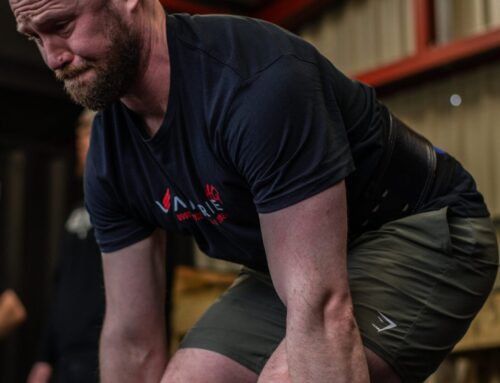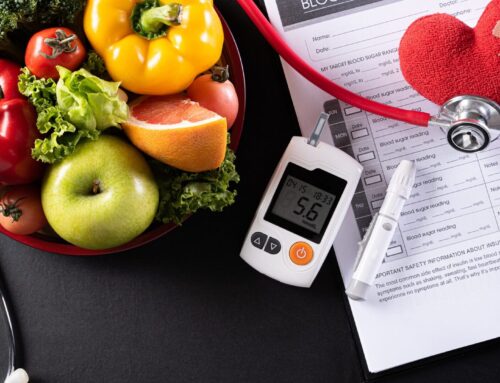Are you confused about how to track calories with MyFitnessPal or other calorie-tracking apps? Perhaps you’re not making the progress you were hoping for?

Calorie tracking can be a really useful TOOL for the right person, if they follow the correct approach
It can sound appealing, eat whatever you like, track it, lose weight. However, like a lot of tools, if you do not use them correctly you end up with disappointing results.
So, how do you ensure you are tracking your calories properly, in the easiest way possible?
With the right approach to using calorie-tracking apps like MyFitnessPal or Fitbit, you can go a long way to ensuring that you get maximum reward for your efforts.
In this blog, I’m going to give you an insight into the approach I use with my clients who chose to use MyFitnessPal to track their calorie intake.
First things first
Ask if you need to bother in the first place
Firstly, ask yourself if you NEED to use an app like MyFitnessPal or Fitbit? Read my blog here to help you decide.
If you are ready to use MyFitnessPal, Fitbit, or another calorie tracking app then I’m going to give you some handy pointers to use them successfully.
1. Calorie Tracking basics
Firstly,
Eat like a grown up:
-
Get 80% of your calories from healthy, wholesome foods
-
you know what these are – lean proteins, starchy carbohydrates, fruits and vegetables
-
The other 20% can be from the other stuff
Then,
Keep it as simple as possible!
You only need to hit your target to the nearest 100 calories because all calorie values are estimates anyway. Consistency always beats perfection.
Remember, the weekly or fortnightly average is what counts, not the total on any particular day.
Thinking of calories like a bank balance can really help:
-
If you need 2,000 calories per day to lose weight that’s 14,000 for the week.
-
If you eat 3,000 on a Sunday, then you’d need to eat 1,800 for the other 6 days to even things out
-
Remember, just like a bank balance you can spend it all on pay day but you’re going to be scratching around by the end of the month if you do!
Tip: We often eat more at the weekends so it can be really helpful to start your week of calorie tracking on a Friday which allows you to ‘reign back’ any over indulgences at the weekend. Just don’t take this too far and end up with 100 calories in the ‘bank’ by the end of the week!
Don’t overthink macronutrients:
MyFitnessPal wil give you a calorie, protein, carbohydrate and fat target. Unless you’re planning to stand on stage in a swimsuit with a spray tan (because you’re a bodybuilder) then focus on hitting the calorie target as a priority with the protein target a close second.
I do get sportspeople to check their carb intake now and then because it’s important for optimal performance. But, spending hours lining up precise carbohydrate and fat totals is a complete waste of energy. As long as hit your calorie and protein total the rest sorts itself out across the course of a week. Just don’t go around eating sticks of butter and you’ll be OK!
2. Be active and not passive in the process
Calorie tracking is a TOOL, use it to educate yourself on the calorie content of foods and what portion sizes are appropriate for your calorie goal.
If you are active, rather than passive during this process, then you don’t need to track in detail for more than a few weeks.
What do I mean by being active?
If you track an apple, you’ll see that it is around 80 calories. By the third time you track it then you can probably remember how many calories it is so just use the ‘quick add’ feature to enter those 80 calories. The point of using the app is to learn, not to keep entering the same meal, containing the same calories, for the rest of your life!
Once you have determined the portions you should be eating to hit your calorie target then you can just judge portions visually which means far less tracking.
Then if you come across an unfamiliar ingredient or food, you can just look that one up, determine a portion and remember how many calories it contains (to the nearest 50).
For example, I know that 250g (medium-sized) potato is roughly 200-250 calories. 60g (dry weight) of rice or pasta is also 200-250 calories. When I build a meal, I just stick to that portion size each time (1 medium potato/60g of rice) and I know there are 250 calories on my plate. Simple 💪🏻
3. Don’t leave it until the end of the day to update your food diary
This applies to any type of food diary.
Tracking before you eat something helps you decide on an appropriate portion size and avoids you getting to dinner time and finding that you ‘only have enough calories’ for an apple.
If you leave everything until the end of the day, how likely are you to remember exactly what you ate?
Bonus: If you particularly like planning, and you have time, plan your meals in advance the night before. I know that sounds like a pain but planning always gives freedom!
4. Don’t believe all of the entries
‘Fake news’ exists everywhere, always think critically when reviewing entries.
A green tick in MyFitnesPal indicates items in their database that include complete nutrition information. This does not mean that information is correct! Look at a variety of entries and don’t be tempted to pick the entry with the fewest calories unless you know that is correct.
Tips:
-
Where there are several entries for the same thing, pick the one in the middle of the range
-
example: if the options are 300, 500 or 900 calories pick 500 calories
-
Sometimes, I also like to cross-check by going to a supermarket website and finding an equivalent food in their online shop and checking the nutritional information
-
Don’t worry too much though, whichever one you pick, just be consistent and pick that same ingredient each time (for example: ½ can Heinz baked beans)
-
Think critically, if the number of calories for one entry is lower than all the others then why is that?
5. Use the right portion sizes
By controlling portions sizes, you control your calorie intake by default.
So, if you are going to use a calorie tracking app, then it goes without saying that you need to take the time to ensure the portions you enter are accurate by either weighing on the scale or using a volumetric measurement (like cups, etc.)
Weighing is by far the most consistent, always weigh if possible, but be sure to weigh foods before cooking. That means raw weights for meat and fish and dry weights for things like pasta, rice, and grains.
Don’t forget about oils, sauces, mayo, etc. these all have calories too!
Drinks count too:
-
Water is calorie-free
-
Black tea and coffee are practically calorie-free
-
Look up the calories for everything else, if they total less than 50 calories across an entire day then it’s probably not worth bothering to track them
6. Pick a serving size and stick to it
Don’t make yourself a lot of extra work by constantly changing the portion sizes of the foods you each regularly.
Pick a standard size and stick to it, for example 60g of rice or pasta (weighed dry), 150g or meat (weighed raw).
7. Track ingredients and not generic foods
There are many different ways of making something like a lasagne. Tracking ingredients rather than a generic ‘lasagne’ allows you to take into account the amount of cheese, beef, pasta, etc. you have used.
Tip: Save ingredients as a recipe in the app to use again next time. Or, even better, just remember the calories per portion (you could even write that in your recipe book if you wanted to!)
8. Vegetables
Green, leafy vegetables generally have very few calories so maybe look them up once and judge for yourself if they are worth tracking in the portions you eat them.
I just deduct 100 calories from my daily calorie target and eat whatever vegetables I like, only tracking the starchy veg like potatoes, squashes, pumpkin, etc.
9. Don’t let your calorie tracker ‘account for exercise calories’!
Tip: Keep it simple, and turn off the ‘calories from exercise’ in the tracker.
Why?
When you set up your calorie target, the amount of exercise you do regularly is included in the calculation already.
So, if you were to eat any additional ‘activity-based’ calories that show in the tracker, you are exceeding your calorie target. The only exception to this would be if it is an irregular, unplanned activity (for example a long cycle ride at the weekend that you only do once a month).
I get it, your flashy new smartwatch costs a lot of money and the idea it can tell you ho many calories you need to eat a day is appealing but it just doesn’t work in practice for most people I’m afraid. Sorry 🤷🏼♂️
10. Eating out is a bit of guess work
Foods prepared by a chef are always going to have larger portions and probably made with more oil or butter than you would use at home. Because of this I suggest you add two tablespoons of oil to anything you eat out and track.
Other tips:
-
When eating out a main course is usually between 750 and 1,500 calories
-
If you’re eating in Nando’s (or another chain restaurant) then search using the restaurant name
-
If you’re in a pub then sometimes you can add ‘Wetherspoons’ to the meal you’re searching for
Now you can use a calorie tracker accurately you are far more likely to get the results you desire.
Just remember, you don’t need to do it for more than a few weeks so long as you use it as a learning experience.
MyFitnessPal also has a few tips of their own on their website if you wanted to check them out:
https://blog.myfitnesspal.com/essential-guide-to-myfitnesspal/
https://blog.myfitnesspal.com/9-insider-tips-from-the-myfitnesspal-staff/
There you have it, you can now successfully track calories in MyFitnessPal or other calorie-tracking apps. You’ve probably picked up a few little tips from this blog. I’d love to hear which ones you found most useful or answer any questions you might have so just let me know in the comments.



